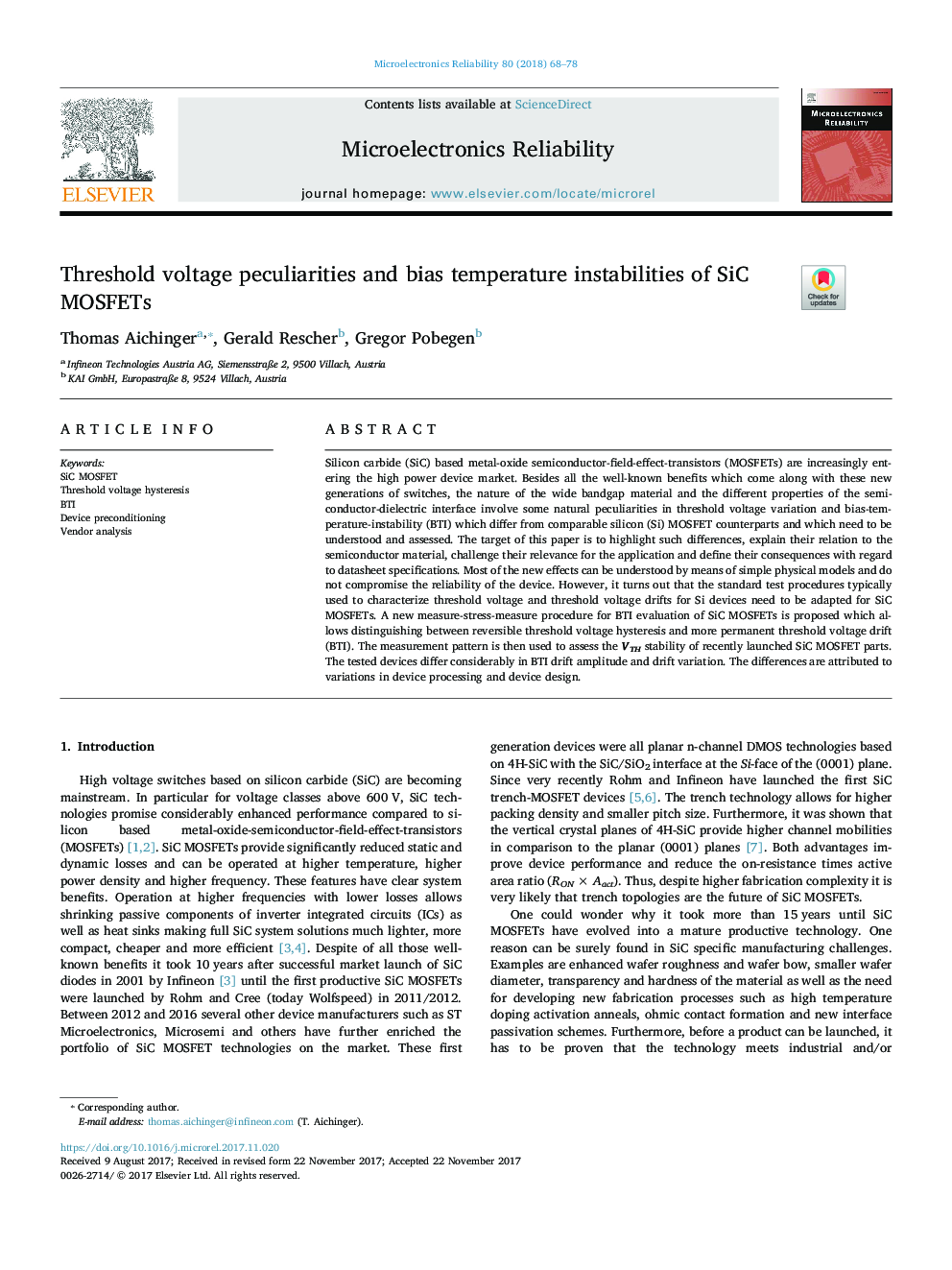| Article ID | Journal | Published Year | Pages | File Type |
|---|---|---|---|---|
| 6945948 | Microelectronics Reliability | 2018 | 11 Pages |
Abstract
Silicon carbide (SiC) based metal-oxide semiconductor-field-effect-transistors (MOSFETs) are increasingly entering the high power device market. Besides all the well-known benefits which come along with these new generations of switches, the nature of the wide bandgap material and the different properties of the semiconductor-dielectric interface involve some natural peculiarities in threshold voltage variation and bias-temperature-instability (BTI) which differ from comparable silicon (Si) MOSFET counterparts and which need to be understood and assessed. The target of this paper is to highlight such differences, explain their relation to the semiconductor material, challenge their relevance for the application and define their consequences with regard to datasheet specifications. Most of the new effects can be understood by means of simple physical models and do not compromise the reliability of the device. However, it turns out that the standard test procedures typically used to characterize threshold voltage and threshold voltage drifts for Si devices need to be adapted for SiC MOSFETs. A new measure-stress-measure procedure for BTI evaluation of SiC MOSFETs is proposed which allows distinguishing between reversible threshold voltage hysteresis and more permanent threshold voltage drift (BTI). The measurement pattern is then used to assess the VTH stability of recently launched SiC MOSFET parts. The tested devices differ considerably in BTI drift amplitude and drift variation. The differences are attributed to variations in device processing and device design.
Keywords
Related Topics
Physical Sciences and Engineering
Computer Science
Hardware and Architecture
Authors
Thomas Aichinger, Gerald Rescher, Gregor Pobegen,
